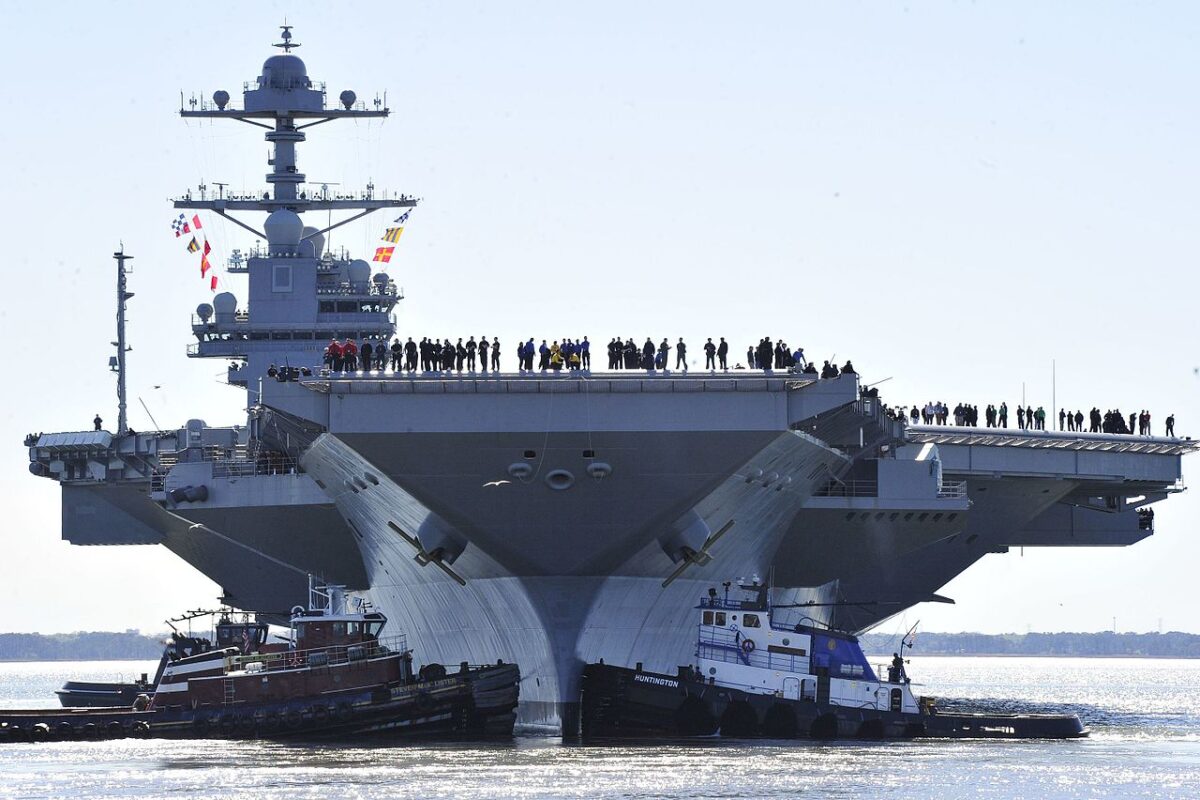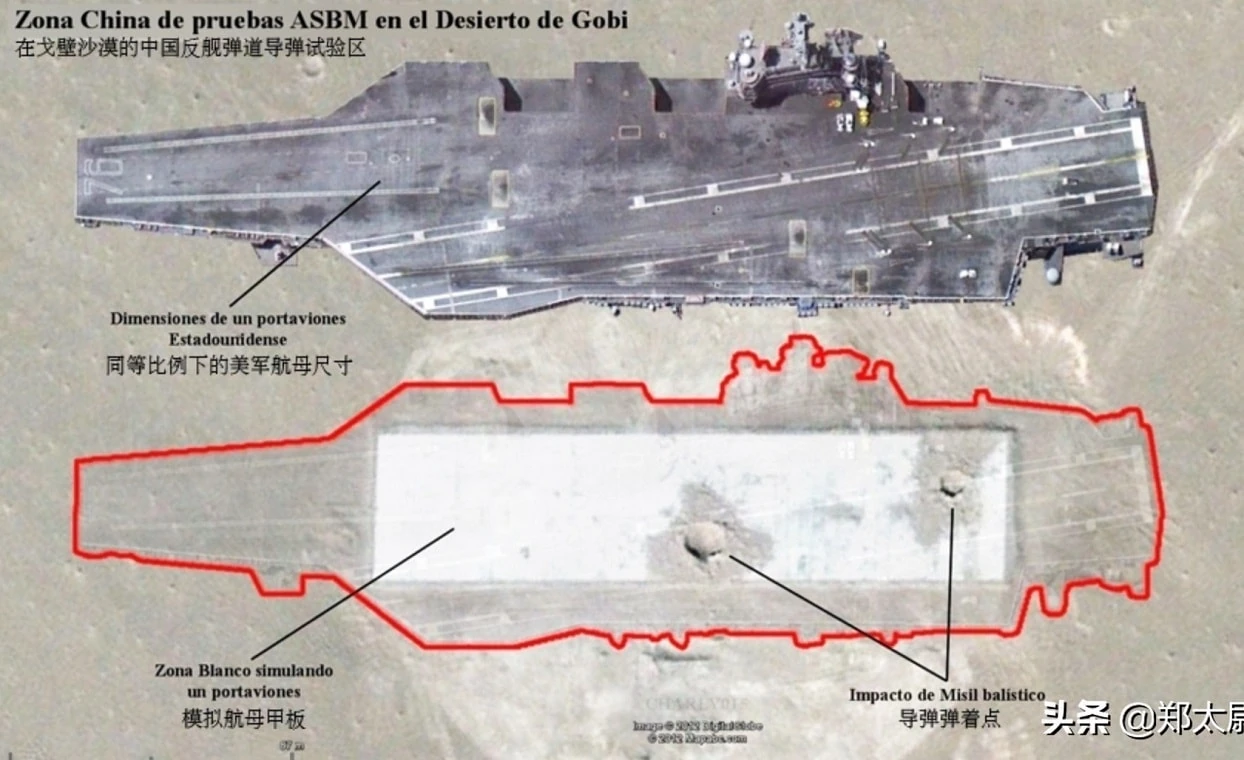The aircraft carrier, to this day, is still the symbol of power for the U.S. Navy and even China‘s growing naval forces. And yet, countless experts say that these ships are nothing more than floating targets. Who is right? We asked one top expert to explain:
The last “battleship battle” has gone down in history as a one-sided slaughter when the United States Navy destroyed the Imperial Japanese Navy’s battleship Kirishima during the Battle of the Surigao Strait on October 25, 1944. As part of the larger Battle of Leyte Gulf, that particular engagement marked the last battleship-to-battleship in history and was one of only such fights between the capital warships in the entire Pacific campaign of the Second World War.
While the battleship’s role in navies around the world for another fifty years, and it wasn’t until Operation Desert Storm in 1991 that marked the last time that U.S. Navy battleships fired their guns in anger when the USS Missouri and USS Wisconsin conducted standard naval artillery support.
One hundred years ago the battleship ruled the wave—but World War II proved what Gen. Billy Mitchell and other aviation supporters already knew: that the aircraft carrier would be the future. The United States had been a pioneer in naval aviation when a flight deck was erected on the forecastle of the cruiser USS Birmingham (CL-2), but the Royal Navy’s HMS Furious was the first warship to be refitted to operate as a carrier. The Japanese would subsequently launch the Hōshō, the first purpose-built aircraft carrier.
For one hundred years the carriers have gotten larger and more powerful—and are arguably far from obsolete.
Yet, there are reasons to question the long-term future of aircraft carriers. Interesting Engineering addressed the issue this month, highlighting the time and cost to build carriers. During World War II, the United States went from having just a handful of carriers to save the day during the Battle of Midway, to literally having a massive fleet of the flattops by war’s end.
It is not hyperbole to state that the U.S. Navy had more carriers than it knew what to do with—but today it still maintains eleven supercarriers, with talk of keeping some of the aging carriers around a bit longer than expected. The reasoning is that it takes a massive amount of time to build a carrier—upwards to five or six years but that is only to the commissioning. Sea trials take an additional two to three years. The USS Gerald R. Ford (CVN-78) took eight years to build.
Anti-Ship Weapons
With the introduction of new warships, military thinkers sought ways of both protecting their ships but also ways to sink their enemy’s vessels. The battleship proved especially vulnerable to new weapons notably from the airplane—as the Royal Navy found out in the most horrific way in December 1941 when HMS Prince of Wales was sunk.
During the Cold War, the great threat to U.S. Navy carriers had been Soviet submarines, but today the aircraft carrier could face even more powerful threats including so-called carrier-killer missiles and nuclear-tipped torpedoes. Such weapons could mean that carriers would need to operate far from enemy waters and increasingly far from enemy territory.
That could seriously limit a carrier’s effectiveness given the combat range of aircraft.
The Future Carrier
The carrier likely won’t go away, but it may need to evolve to stay relevant. This could include a shift away from the massive supercarriers of the U.S. Navy and a move to smaller amphibious assault ships that can operate with short vertical takeoff and landing (SVTOL) aircraft such as the Lockheed Martin F-35B Lightning II Joint Strike Fighter.
Additionally, unmanned drones could be developed to operate from these smaller flattops. They would have the added benefit of being cheaper to build and can stay in the air for extended periods, Interesting Engineer noted. Moreover, unmanned aircraft don’t require added time in pilot training—and could address the military’s pilot shortage.

NEWPORT NEWS, Va. (April 8, 2017) – Pre-Commissioning Unit Gerald R. Ford (CVN 78) Sailors man the rails as the ship departs Huntington Ingalls Industries Newport News Shipbuilding for builder’s sea trials off the coast. The first- of-class ship—the first new U.S. aircraft carrier design in 40 years—will spend several days conducting builder’s sea trials, a comprehensive test of many of the ship’s key systems and technologies. (U.S. Navy photo by Chief Mass Communication Specialist Christopher Delano).
The carrier may evolve in other ways, and perhaps we could see a reconsideration of submersible aircraft carriers, which could surface to deploy those unmanned drones and then dive to avoid being targeted by an enemy’s hypersonic missiles.
Simply put, the carrier has to adapt for the changing world of the twenty-first century to remain relevant. Otherwise it risks sailing off into the sunset like the battleship or worse being an expensive target in a future conflict.
Expert Biography: A Senior Editor for 1945, Peter Suciu is a Michigan-based writer who has contributed to more than four dozen magazines, newspapers, and websites with over 3,000 published pieces over a twenty-year career in journalism. He regularly writes about military hardware, firearms history, cybersecurity, and international affairs. Peter is also a Contributing Writer for Forbes.

